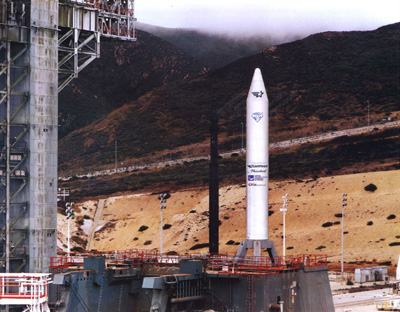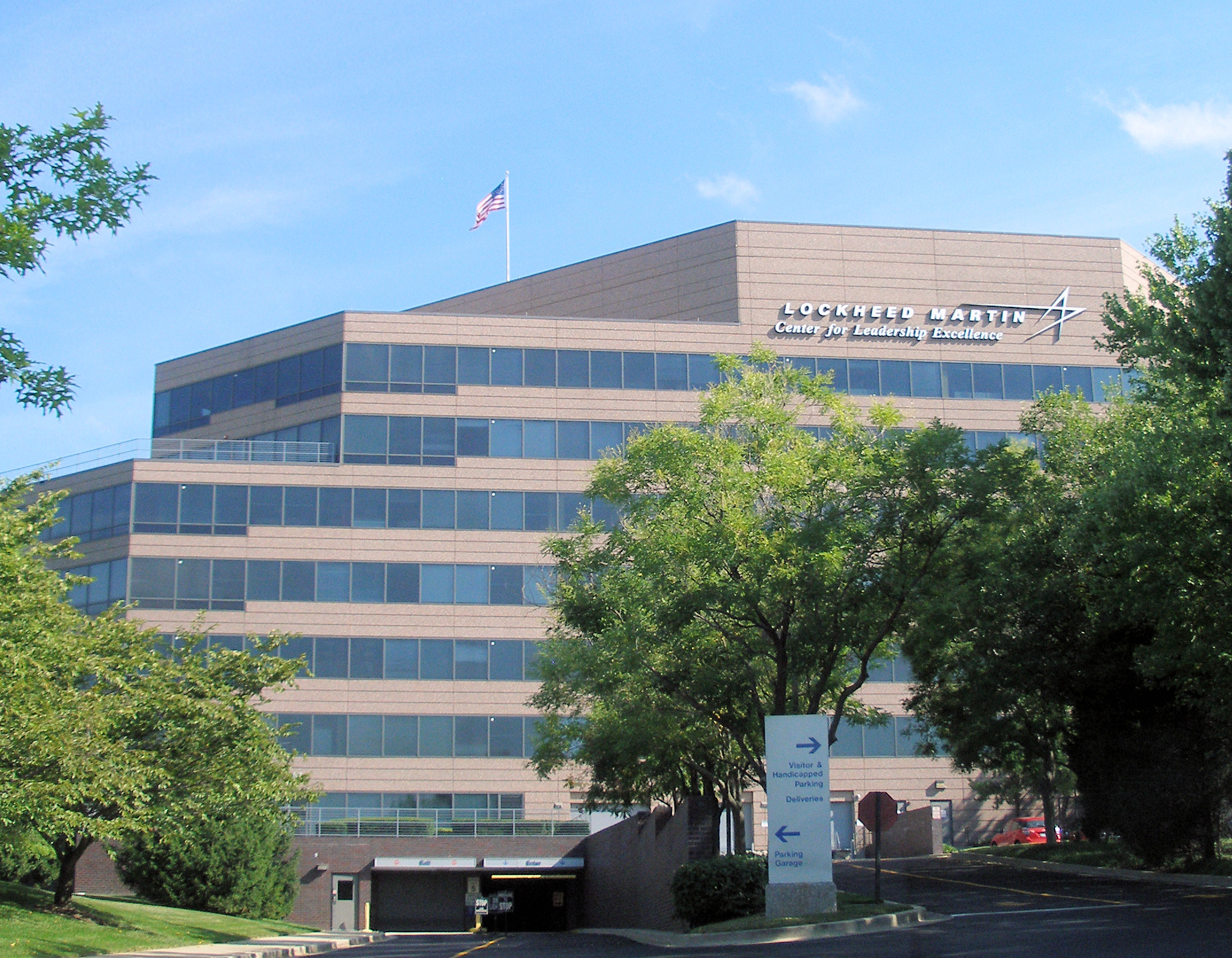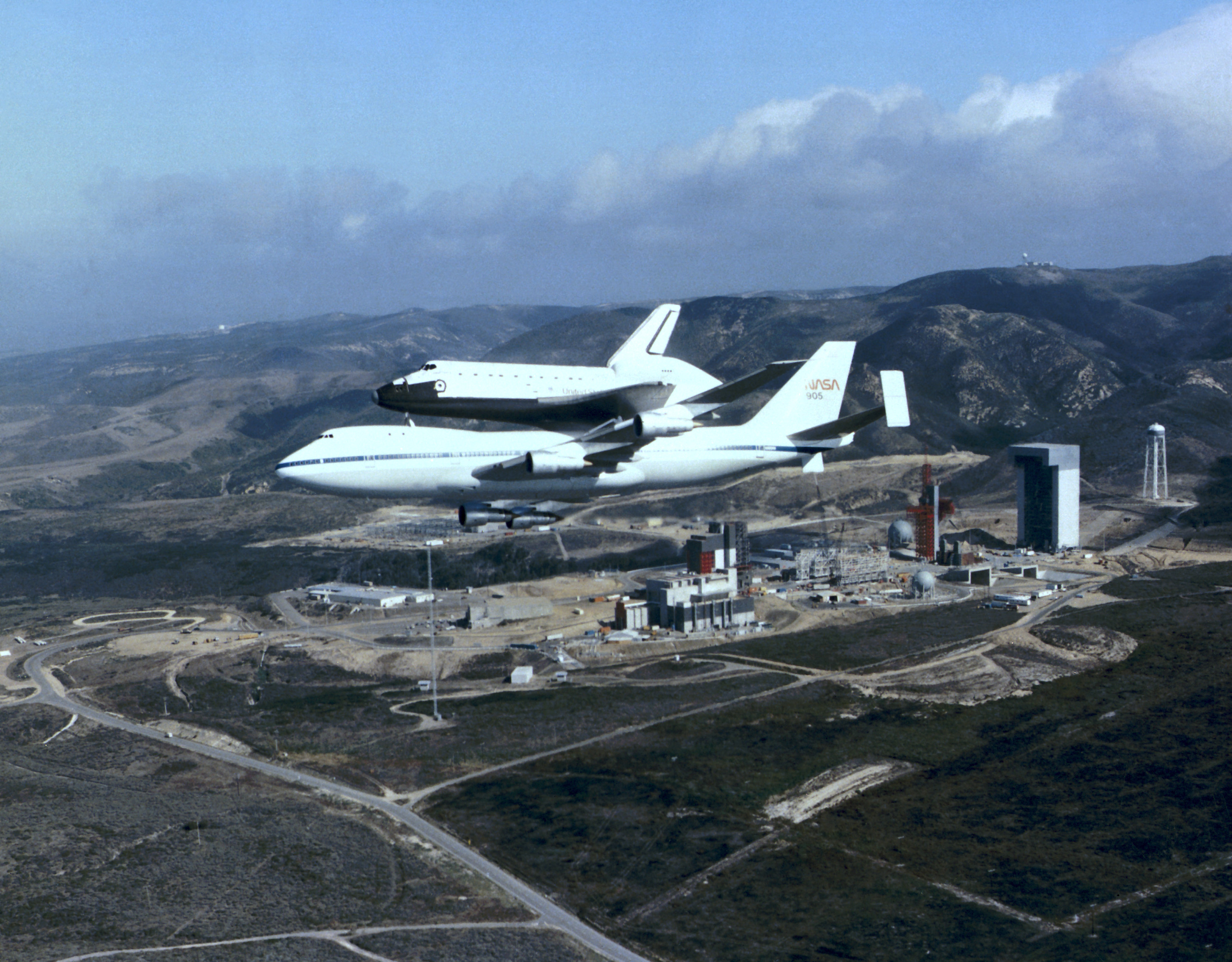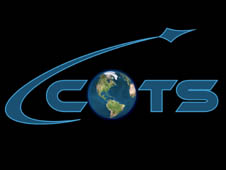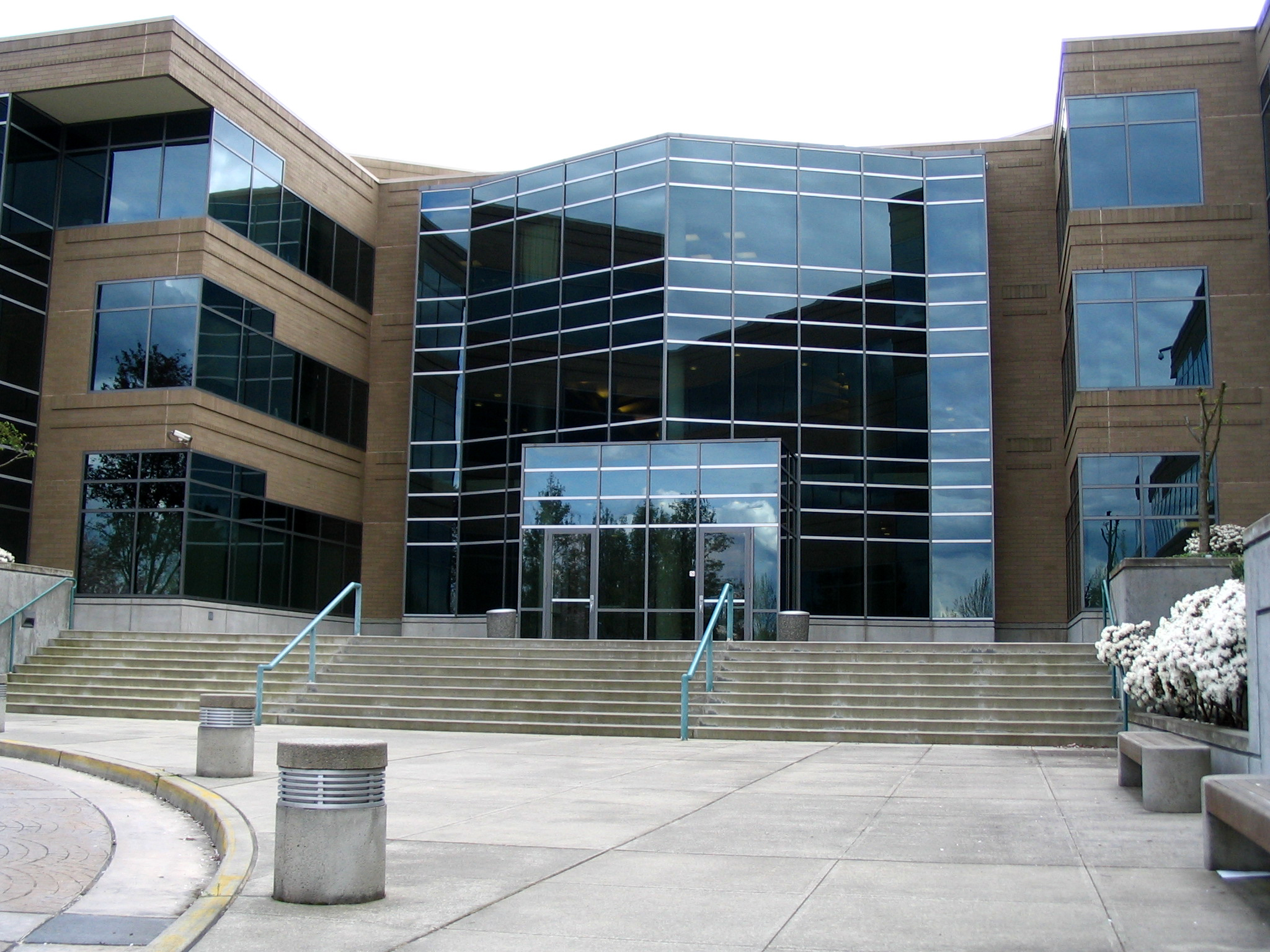|
Athena (rocket Family)
Athena was a 1990s Lockheed Martin expendable launch system which underwent several name changes in its lifetime. Development began at the Lockheed Corporation in 1993, where the design was known as the Lockheed Launch Vehicle. The name was subsequently changed to the Lockheed Martin Launch Vehicle when Lockheed merged with Martin Marietta. In 1997 the name was finally changed to Athena, and all of the launches after the demonstration flight in August 1995 were conducted using that name. Athena was retired from service in 2001, but in September 2010 Athena was added to NASA's Launch Services II contract. It was announced that it would be put back into production, with launches set to resume in 2012. All production had ceased by March 2017. Variants The Athena comes in two versions, Athena I and Athena II. The Athena I has two stages, the Thiokol Castor (rocket stage), Castor-120 first stage and a Pratt & Whitney ORBUS 21D upper stage, both powered by Solid-fuel rocket, solid pr ... [...More Info...] [...Related Items...] OR: [Wikipedia] [Google] [Baidu] |
Lockheed Martin
The Lockheed Martin Corporation is an American Arms industry, defense and aerospace manufacturer with worldwide interests. It was formed by the merger of Lockheed Corporation with Martin Marietta on March 15, 1995. It is headquartered in North Bethesda, Maryland, United States. As of January 2022, Lockheed Martin employs approximately 121,000 employees worldwide, including about 60,000 engineers and scientists. Reports from 2024 estimate that Lockheed Martin Corporation (LMT) holds a market cap of around $139.7 billion. Lockheed Martin is one of the largest companies in the aerospace, military support, security, and technologies industry. It was the world's largest defense contractor by revenue for fiscal year 2014.POC Top 20 Defence Contractors of 2014 . Retrieved: July 2015 ... [...More Info...] [...Related Items...] OR: [Wikipedia] [Google] [Baidu] |
Athena II
The Athena II is an American small expendable launch system which was used for three launches between 1998 and 1999, and which was scheduled to return to service in 2012 but has not been flown again as of 2024. It is a member of the Athena family of rockets, along with the smaller Athena I. The Athena II is a four-stage rocket, consisting of solid first, second and third stages, and a monopropellant liquid-fueled fourth stage. The first and second stages are Castor 120s, which are also used on some versions of the Taurus rocket. An Orbus 21D motor was used as the third stage on launches during the 1990s. A planned second generation Athena II launch vehicle will use a Castor 30 third stage which is under currently under development for the Taurus II. The fourth stage is an Orbital Adjustment Module, fueled by hydrazine and propelled by four MR-107 engines, which is used for final insertion. Prior to its retirement in 1999, Athena II launches were made from Launch Complex 4 ... [...More Info...] [...Related Items...] OR: [Wikipedia] [Google] [Baidu] |
Vandenberg AFB Space Launch Complex 6
Vandenberg Space Launch Complex 6 (SLC-6, pronounced "Slick Six") is a launch pad and associated support infrastructure at Vandenberg Space Force Base in California. Construction at the site began in 1966, but the first launch didn't occur until 1995 due to program cancellations and subsequent repurposing efforts. The site was originally envisioned to support Titan IIIM rockets and the Manned Orbiting Laboratory, however, these projects were terminated before SLC-6's completion. Between 1979 and 1986 the facilities received extensive modifications to accommodate the Space Shuttle. However, budgetary constraints, safety considerations, and political factors ultimately led to the cancellation of Shuttle operations from the West Coast. SLC-6 facilitated four launches of Athena (rocket family), Athena rockets between 1995 and 1999 with minimal modifications. Subsequently, it underwent modifications to support the Delta IV and Delta IV Heavy, which conducted ten successful missions b ... [...More Info...] [...Related Items...] OR: [Wikipedia] [Google] [Baidu] |
Vandenberg Air Force Base
Vandenberg may refer to: * Vandenberg (surname), including a list of people with the name * USNS ''General Hoyt S. Vandenberg'' (T-AGM-10), transport ship in the United States Navy, sank as an artificial reef in Key West, Florida * Vandenberg Space Force Base, a United States military installation with a spaceport * Vandenberg (band), a Dutch hard rock band ** ''Vandenberg'' (album), their 1982 debut album * Vandenberg resolution, a United States Congress resolution passed in 1948 {{disambig ... [...More Info...] [...Related Items...] OR: [Wikipedia] [Google] [Baidu] |
Space Shuttle Solid Rocket Booster
The Space Shuttle Solid Rocket Booster (SRB) was the first solid-propellant rocket to be used for primary propulsion on a vehicle used for human spaceflight. A pair of them provided 85% of the Space Shuttle's thrust at liftoff and for the first two minutes of ascent. After burnout, they were jettisoned, and parachuted into the Atlantic Ocean, where they were recoverable booster, recovered, examined, refurbished, and reusable launch system, reused. The Space Shuttle SRBs were the most powerful solid rocket motors to ever launch humans. The Space Launch System (SLS) SRBs, adapted from the shuttle, surpassed it as the most powerful solid rocket motors ever flown, after the launch of the Artemis 1 mission in 2022. Each Space Shuttle SRB provided a maximum thrust, roughly double the most powerful single-combustion chamber liquid-propellant rocket engine ever flown, the Rocketdyne F-1. With a combined mass of about , they comprised over half the mass of the Shuttle stack at liftoff. ... [...More Info...] [...Related Items...] OR: [Wikipedia] [Google] [Baidu] |
Space Shuttle
The Space Shuttle is a retired, partially reusable launch system, reusable low Earth orbital spacecraft system operated from 1981 to 2011 by the U.S. National Aeronautics and Space Administration (NASA) as part of the Space Shuttle program. Its official program name was the Space Transportation System (STS), taken from the 1969 plan led by U.S. vice president Spiro Agnew for a system of reusable spacecraft where it was the only item funded for development. The first (STS-1) of four orbital test flights occurred in 1981, leading to operational flights (STS-5) beginning in 1982. Five complete Space Shuttle orbiter vehicles were built and flown on a total of 135 missions from 1981 to 2011. They launched from the Kennedy Space Center (KSC) in Florida. Operational missions launched numerous satellites, interplanetary probes, and the Hubble Space Telescope (HST), conducted science experiments in orbit, participated in the Shuttle–Mir program, Shuttle-''Mir'' program with Russia, ... [...More Info...] [...Related Items...] OR: [Wikipedia] [Google] [Baidu] |
PlanetSpace
PlanetSpace was a privately funded Chicago-based rocket and Spaceflight, space travel project founded by Geoff Sheerin, CEO of the Canadian Arrow corporation. The owner was Dr. Chirinjeev Kathuria. In February, 2007, NASA announced plans to provide PlanetSpace with requirements and specifications to provide crew and cargo flights to the International Space Station under the terms of the National Aeronautics and Space Act. Initially, PlanetSpace planned to use the Silver Dart for this purpose, but on 21 November 2007 PlanetSpace announced its Commercial Orbital Transportation Services, COTS proposal would use a spacecraft provided by Lockheed Martin. This proposal did not include use of the Silver Dart. Planetspace is not in business as its corporate status was revoked by Canadian government due to non-compliance with filing requirements. Its last annual meeting was held in 2010 and no filings since then. Background The mission of PlanetSpace was to make space travel accessibl ... [...More Info...] [...Related Items...] OR: [Wikipedia] [Google] [Baidu] |
Commercial Orbital Transportation Services
Commercial Orbital Transportation Services (COTS) was a NASA program to spur the development of Private spaceflight, private spacecraft and launch vehicles for deliveries to the International Space Station (ISS). Launched in 2006, COTS successfully concluded in 2013 after completing all demonstration flights. NASA's final report on the program considered it a success and a model for future public-private collaboration. Compared to traditional cost-plus contracts employed by NASA, such as the $12 billion contract for the Orion (spacecraft), Orion spacecraft, the $800 million COTS investment resulted in "two new U.S. Medium-lift launch vehicle, medium-class launch vehicles and two automated cargo spacecraft". After the conclusion of the COTS program, NASA shifted towards Fixed-price contract, fixed-price contracts for crew and cargo services. While the approach has significantly lowered costs for NASA, companies other than SpaceX have struggled under the fixed-price system, with som ... [...More Info...] [...Related Items...] OR: [Wikipedia] [Google] [Baidu] |
Hydrazine
Hydrazine is an inorganic compound with the chemical formula . It is a simple pnictogen hydride, and is a colourless flammable liquid with an ammonia-like odour. Hydrazine is highly hazardous unless handled in solution as, for example, hydrazine hydrate (). Hydrazine is mainly used as a foaming agent in preparing Polymeric foam, polymer foams, but applications also include its uses as a precursor (chemistry), precursor to pharmaceuticals and agrochemicals, as well as a long-term storable propellant for in-outer space, space spacecraft propulsion. Additionally, hydrazine is used in various rocket propellant, rocket fuels and to prepare the gas precursors used in airbags. Hydrazine is used within both nuclear and conventional electrical power plant steam cycles as an oxygen scavenger to control concentrations of dissolved oxygen in an effort to reduce corrosion. , approximately 120,000 tons of hydrazine hydrate (corresponding to a 64% solution of hydrazine in water by weight) we ... [...More Info...] [...Related Items...] OR: [Wikipedia] [Google] [Baidu] |
Redmond, WA
Redmond is a city in King County, Washington, United States, located east of Seattle. The population was 73,256 at the 2020 United States census, 2020 census. Redmond is best known as the home of Microsoft and Nintendo of America. The city has a large technology industry in addition to being a bedroom community for Seattle, which lies across Lake Washington on Washington State Route 520, State Route 520. With an annual bike race on city streets and the state's only velodrome, Redmond is also known as the "Bicycle Capital of the Northwest". History Indigenous peoples of the Americas, Native Americans have lived in the Redmond area for about 10,000 years, based on artifacts discovered at the Redmond Town Center archaeological site and Marymoor Prehistoric Indian Site. The first European settlers arrived in the 1870s. Luke McRedmond filed a Homestead Act claim for land next to the Sammamish Slough on September 9, 1870, and the following year Warren Perrigo took up land adjacent ... [...More Info...] [...Related Items...] OR: [Wikipedia] [Google] [Baidu] |
General Dynamics
General Dynamics Corporation (GD) is an American publicly traded aerospace and defense corporation headquartered in Reston, Virginia. As of 2020, it was the fifth largest defense contractor in the world by arms sales and fifth largest in the United States by total sales. The company is a ''Fortune'' 100 company and was ranked in 2022. Formed in 1952 with the merger of submarine manufacturer Electric Boat and aircraft manufacturer Canadair, the corporation today consists of ten subsidiary companies with operations in 45 countries. The company's products include Gulfstream business jets, and nuclear-powered submarines, guided-missile destroyers, M1 Abrams tanks, and Stryker armored fighting vehicles. In 2024, General Dynamics had worldwide sales of $47.7 billion and a workforce of approximately 117,000 full-time employees. The current chairman and chief executive officer (CEO) is Phebe Novakovic. History Electric Boat General Dynamics traces its ancestry to John Philip ... [...More Info...] [...Related Items...] OR: [Wikipedia] [Google] [Baidu] |
Castor 30
Castor is a family of solid-fuel rocket stages and boosters built by Thiokol (now Northrop Grumman) and used on a variety of launch vehicles. They were initially developed as the second-stage motor of the Scout rocket. The design was based on the MGM-29 Sergeant, a surface-to-surface missile developed for the United States Army at the Jet Propulsion Laboratory. Versions Flown versions Castor 1 :The Castor 1 was first used for a successful suborbital launch of a Scout X-1 rocket on September 2, 1960. :It was long, in diameter, and had a burn time of 27 seconds. Castor 1 stages were also used as strap-on boosters for launch vehicles using Thor first stages, including the Delta D. (A Delta-D was used in 1964 to launch Syncom-3, the first satellite placed in a geostationary orbit.) Castor 1 stages were used in 141 launch attempts of Scout and Delta rockets, only 2 of which were failures. They were also used on some thrust-assisted Thor-Agena launchers. The last launch us ... [...More Info...] [...Related Items...] OR: [Wikipedia] [Google] [Baidu] |
